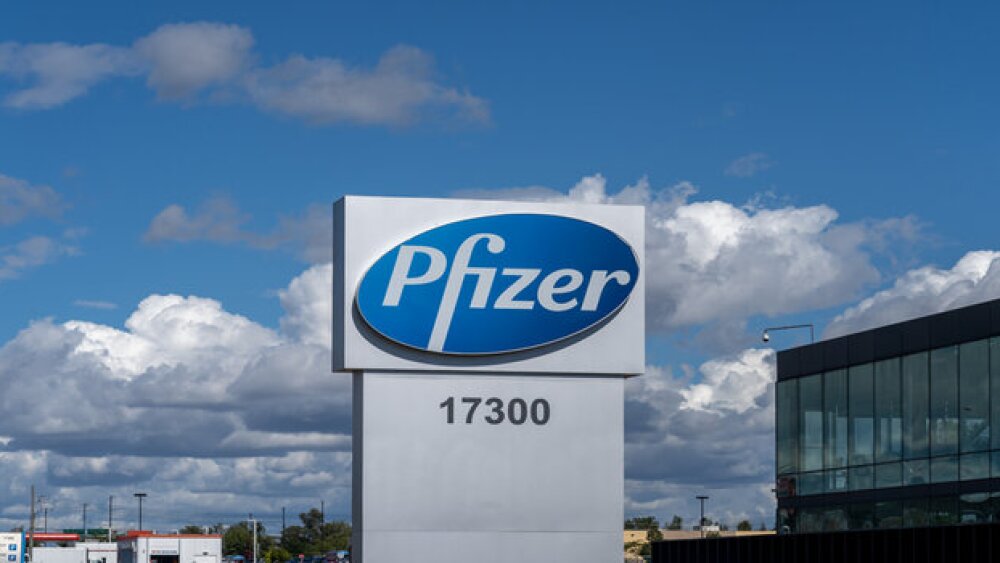A handful of billion-dollar deals in the rare disease space highlights the uptick in Big Pharma’s investment, but it’s still extremely low compared to the money flowing to more common indications.
They’re rare, they’re confounding, and R&D for therapies to address them is painfully underfunded. Rare diseases affect approximately 30 million people in the U.S.—half of them children—but investment in this space is a fraction of what it is for more prevalent illnesses.
In 2023, just 2% of all biotech seed and series A dollars went to rare disease companies, Mark Veich, vice president of philanthropy at Deerfield Management and executive director of The Deerfield Foundation, told BioSpace. “So, it’s a huge gap that we’re absolutely trying to bridge.”
Last month, Lundbeck dropped $2.6 billion to acquire rare disease specialist Longboard Pharmaceuticals. Biogen has made two significant investments in rare disease, setting down a potential $1.8 billion to acquire immunology-focused Human Immunology Biosciences in May 2024 and $7.3 billion for Reata Pharmaceuticals and its Friedreich’s ataxia drug Skyclarys in July 2023. AstraZeneca, Sanofi and Takeda have also made notable rare disease plays. But overall, this space is still very much the domain of smaller biopharma.
The reason for this limited pharma investment, Veich said, has to do with the industry’s conventional business model. “The prevalence of a lot of these diseases is so small that your traditional kind of pharma R&D or your traditional commercial models really don’t apply. If you think of shareholders for public companies, or you think about investors at private companies, there’s just not going to be a return that some of those stakeholders expect.”
And for smaller biopharma companies that do jump into the space, the terrain is often rocky. “There were 40-plus rare disease companies that announced layoffs or restructuring or ceased their operations in 2022, and as far as I could tell, that trend continued last year in 2023,” Veich said.
Over the last several years, almost 1,400 development programs in rare diseases have been paused or put on the shelf, Betsy Scully Ricketts, vice president of policy, government and public affairs at Ultragenyx, told BioSpace in an email, citing data collected by the Haystack Project. “We know a major contributor to this is lack of resourcing,” she said.
Creative Business Models
Considering the environment, companies like Ultragenyx and Zevra Therapeutics that are still pressing forward in rare diseases have to get creative when it comes to funding.
On Sept. 20, the FDA approved Zevra’s Miplyffa as the first treatment for Niemann-Pick disease type C, an ultra-rare, progressive neurodegenerative disease. CEO Neil McFarlane told BioSpace that Zevra has had varying funding approaches throughout the years, including royalty financing, equity, debt and M&A.
“We did both mergers and acquisitions to create Zevra, as well as invested in innovation that was our own technology to get products approved, and also acquired other assets,” McFarlane said.
Key to Zevra’s success, he continued, is a diversified portfolio of several rare disease assets with “very small footprints.”
“We have multiple assets that leverage the same infrastructure . . . on the commercial side, and we have multiple assets that utilize the same infrastructure on the development side.”
Meanwhile, Ultragenyx has primarily leveraged public equity offerings, Howard Horn, CFO and executive vice president of corporate strategy, told BioSpace over email. The California-based company also has “substantial revenues” from its four commercial therapies that have been invested back into its pipeline, according to Horn.
He added that priority review vouchers (PRV), received and sold after the approval of Ultragenyx’s mucopolysaccharidosis type VII and x-linked hypophosphatemia therapies, have also been an important source of funding for the company. “The real value of the voucher program is the ability to sell a PRV to recoup costs of development of a program and apply those proceeds to invest in additional potential therapies for rare and ultrarare diseases,” Horn said.
McFarlane also stressed the importance of PRVs, as well as rare pediatric disease priority review. “There’s been a lot of noise in the system around the reauthorization of that, but that’s a source of non-dilutive capital for companies like ours,” he said. The Rare Pediatric Disease Priority Review Voucher program was set to expire on Sept. 30, 2024, but a short-term extension was signed into law that allows the designations to be granted until December 20.
But with approximately 10,000 rare diseases, the need is too extensive for a handful of biopharma companies to address—especially considering that the average drug costs more than $1 billion to bring to market.
At Deerfield, Veich spends his days brainstorming alternative financing models for rare disease drug development. These include philanthropy, social impact funding—an approach that seeks to generate positive social impact alongside financial returns—and other sources of investment not tied to shareholder value.
While several pharmaceutical companies, such as Pfizer, Eli Lilly and AstraZeneca, have philanthropic foundations, Veich said he is not aware of any Big Pharma foundations using their charitable dollars to support therapeutic development in rare diseases.
The Advancium Health Network, founded by Deerfield Management and the Deerfield Foundation, is considering developing a nonprofit therapeutic company that could benefit from Deerfield’s ecosystem, Veich said.
He suggested that “the quickest way to bring some of those projects to fruition would be to work with industry,” specifically pharmaceutical companies with shelved or stalled assets that they would donate to this non-profit entity, which would then de-risk them and sell them to a commercial partner that could take them across the regulatory finish line. Proceeds from this transaction would then go back into the non-profit company, Veich explained.
“A lot of these assets are beautiful science,” he said. “These companies love the drugs. They think that these are ones that really could [help] patients that have these diseases, but for economic reasons, they just can’t afford to develop them.”
Positive Signs
Still, more funding and regulatory initiatives are needed, experts who spoke with BioSpace agree.
In the case of ultrarare diseases, “we need a new regulatory and economic framework that is suitable to evaluate the efficacy of, and encourage companies to pursue, development of therapies,” Scully Ricketts said. She added that this framework should include a requirement of rational study design—such as FDA acceptance of alternative trial designs and analyses—and FDA alignment on biomarkers that represent underlying disease and traditional (as opposed to accelerated) approvals based on these biomarkers.
The Bespoke Gene Therapy Consortium is working to accelerate the regulatory process for AAV-based gene therapies for rare disease, bringing together government agencies with biopharmaceutical companies and nonprofits. As of June 2023, the consortium, managed by the Foundation for the National Institutes of Health, had commitments from 33 organizations including 11 NIH centers, the FDA, and several biopharma companies, including Ultragenyx, Biogen and Taysha Gene Therapies. The consortium selected the first eight rare diseases for its clinical trials program in May 2023.
Additionally, McFarlane said, “the policy landscape has to continue to remain supportive.” He specifically highlighted the Orphan Drug Act, enacted in 1983 to facilitate the development of drugs for rare diseases or conditions. “Without it, nobody would be here where we are today.” He also stressed the importance of funding the FDA’s newly announced Rare Disease Innovation Hub, which aims to serve as a point of collaboration between the Center for Biologics Evaluation and Research and Center for Drug Evaluation and Research with the goal of improving outcomes for patients.
While there is a ways to go in the rare disease space, there are positive signs. In 2023, more than half of the novel drugs greenlit by the FDA were for rare diseases.
“Investment in rare diseases is growing among mid- to large-sized pharmaceutical companies,” Johan Luthman, head of R&D at Lundbeck told BioSpace in an email. “Companies are increasingly recognizing the potential of rare disease therapeutics, driven by significant unmet medical needs.” Luthman added that drug development in rare diseases often benefits from supportive regulatory pathways, such as orphan and breakthrough designations.
In terms of the current funding environment, McFarlane is optimistic. “Much like a lot of the other biotech and innovative type companies, the tide is now turning back to investment both in the rare disease as well as in the broader environment.”






